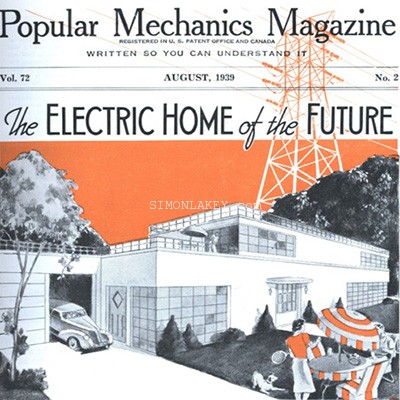About 6-8 millions years ago, the common ancestors of humans and apes went their seperate evolutionary ways. The human brain became considerably larger by having the unique skills that helped develop it. Ever since these early days, humans have found solutions to problems, and found new methods and inventions to become more efficient. In our quest to populate Earth and the universe beyond, science and technology that will take us into the future.
As we progress further into the 21st century, we truly live in a technological world. Technology is a solution to being efficient, to overcome problems, to being connected. We have had a century of many technological advances and modern conveniences that provided us with time saving appliances and information hungry devices. We now live in a connected world, where appliances and devices are connected to each other by a huge network – the cloud. Welcome to the Internet of Things.
The early 20th century saw the introduction of domestic technology, or household machines. These were typically appliances that made life easier (e.g. sewing machines, washing machines, vacuum cleaners etc.). In 1939 Popular Mechanics Magazine predicted the future with a cover and article The Electric Home of the Future, that depicted many modern day appliances.
Early adopters created their own ‘smart homes’ (a loose term by todays standards) in the 1960s after the visions of the dreamers of the 1950s. The first home automation machines arrived in the late 1960s in the form of the home computers, that were very large, and very expensive. Such machines or computers, could be programmed to perform simple tasks – turn appliances on/off, adjust temperature etc.
In the 1970s, the grandfather of home automation, X10 became available – a simple, but unreliable system that could control appliances over power lines. The 1980s and 1990s saw the development of networked systems (e.g. lighting control and wireless data) and digital media (e.g. Compact Disc by Philips and Sony). The Apple iPod arrived in the early 2000s, followed my smart phones with revolutionary touch screen user interfaces. The rest is history, as devices become even more convenient and connected.
There are technological steps we need to take in order to advance into the future. For our personal living, we currently enjoy the convenience of smart appliances (e.g. lighting systems, digital music systems etc.) and smart devices (e.g. mobile phones, tablets, wearables etc.), that when integrated, provide the basics of a smart home.
In a smart home, multiple appliances and systems are connected to each other, and controlled by smart devices. With the progression of the Internet of Things, smart homes will evolve and become connected homes within smart cities.
Home owners, specifiers, and other influential stakeholders need to be aware of the latest smart home technologies, and implement at least the core systems – power, lighting and data, to best future proof the home.
If we design for today, we will only have homes for today, and not for the future. Design for the future, now.

